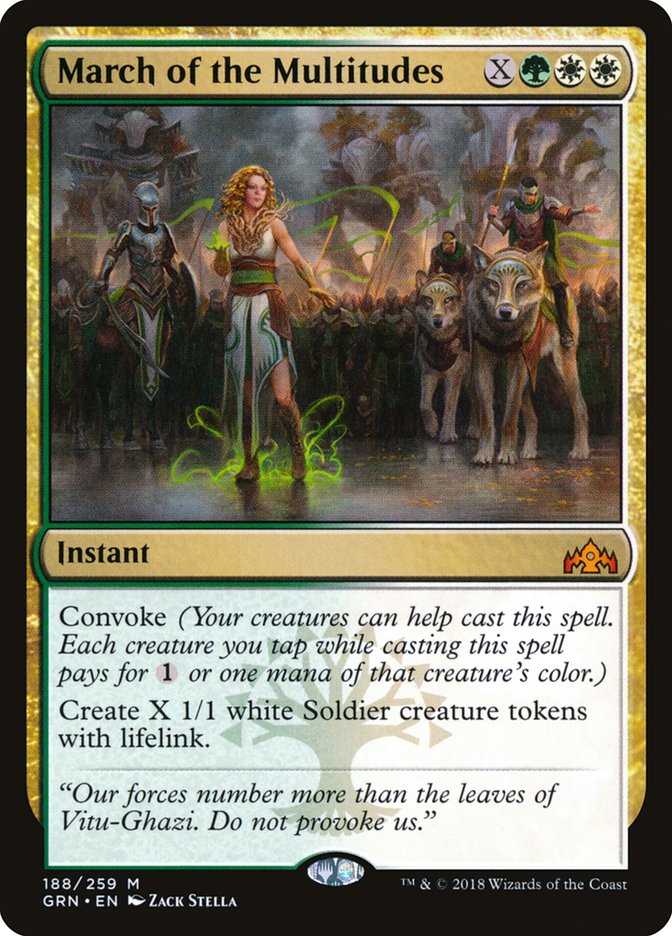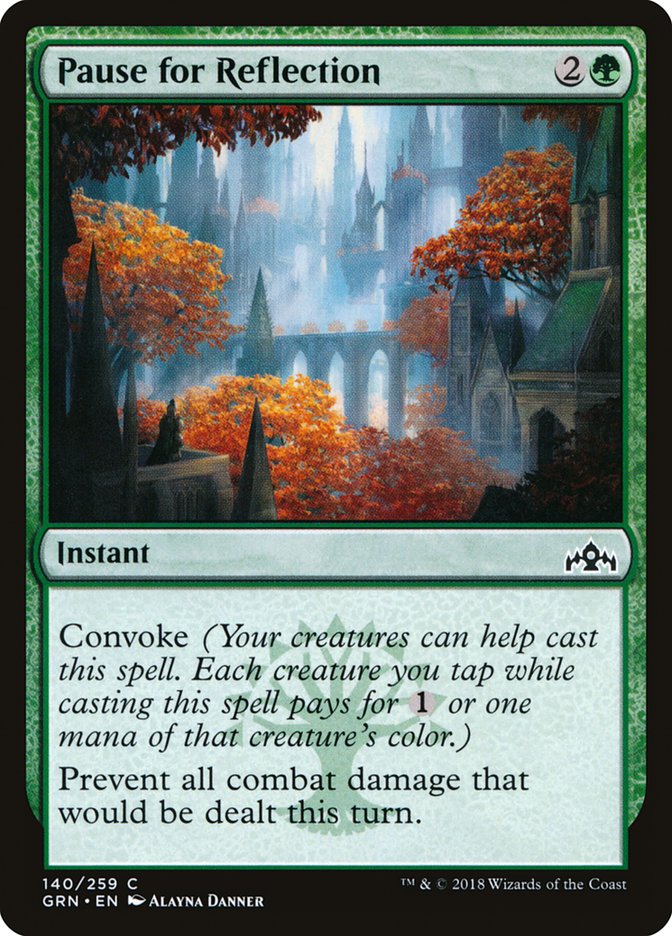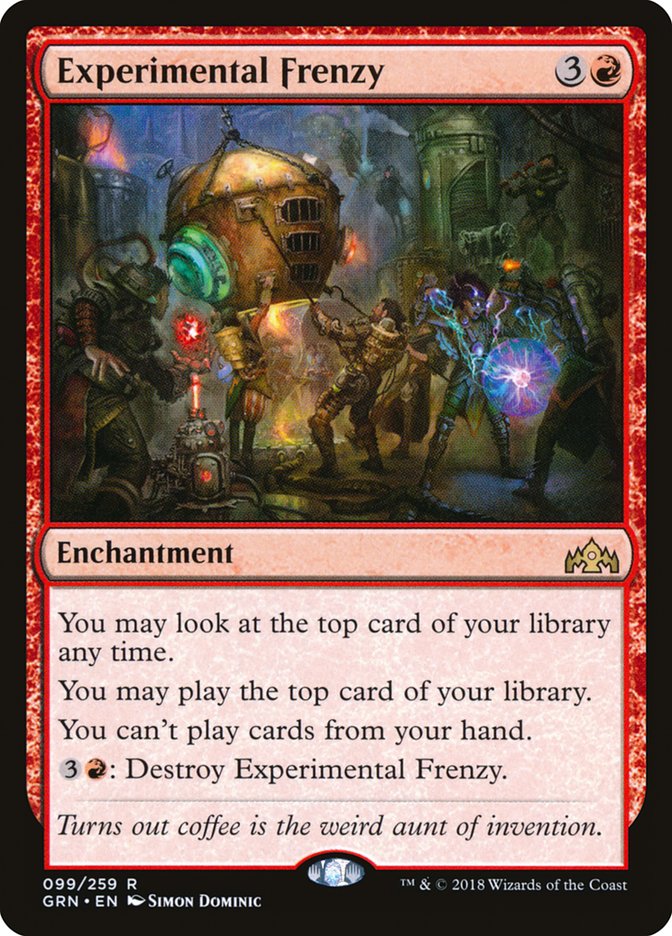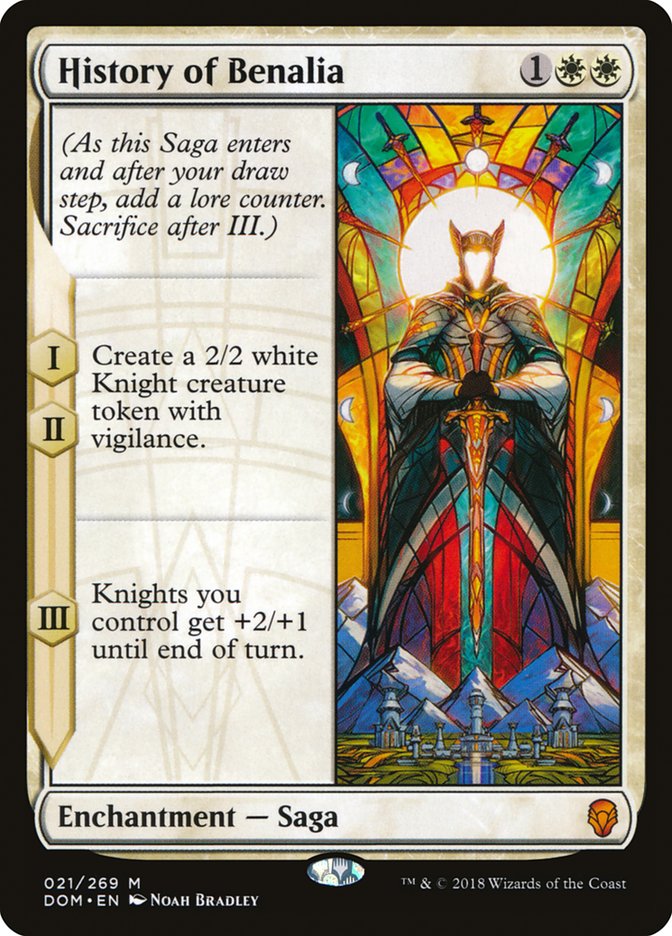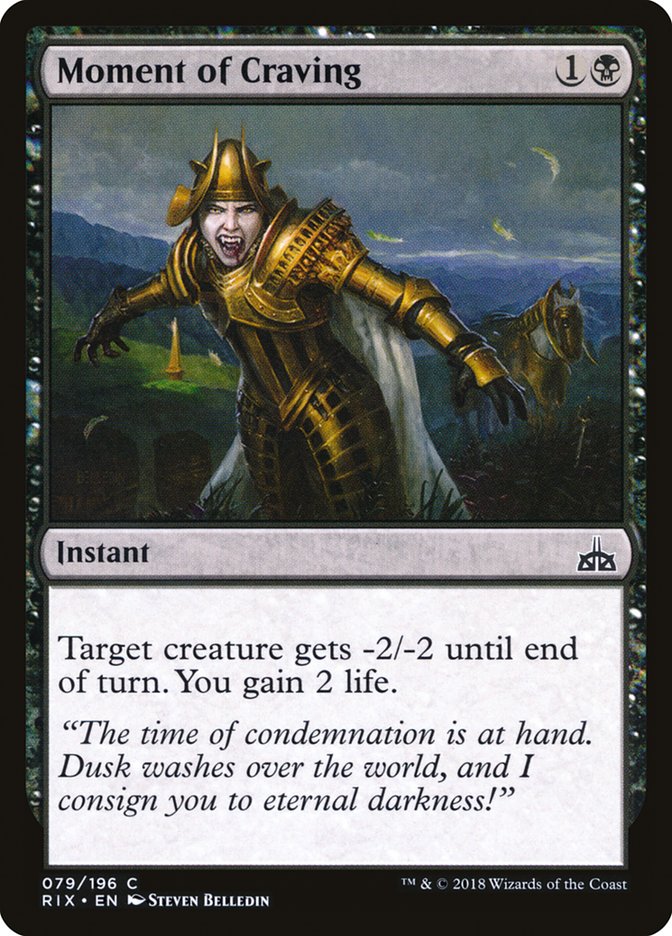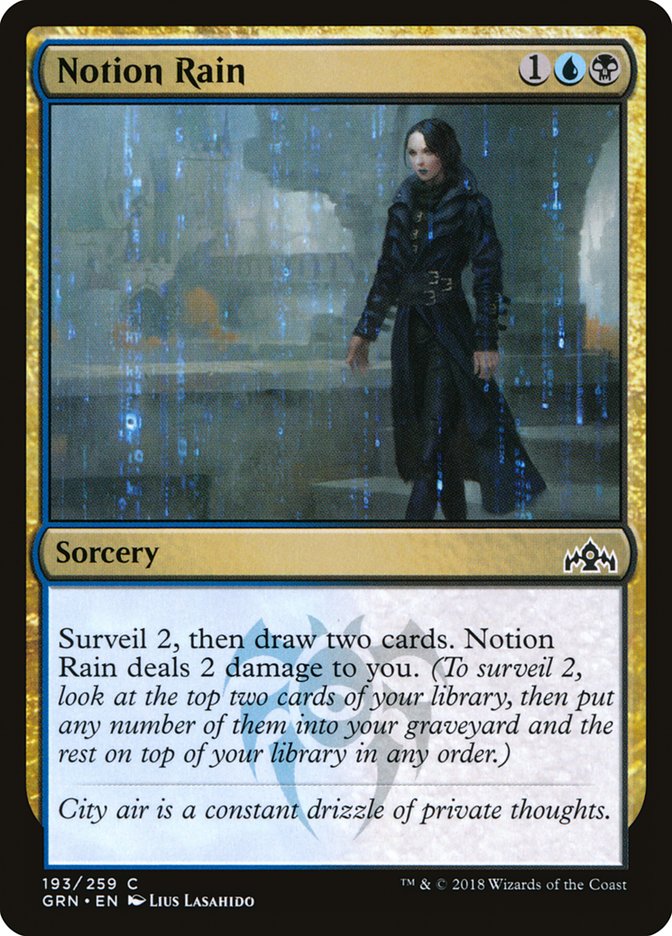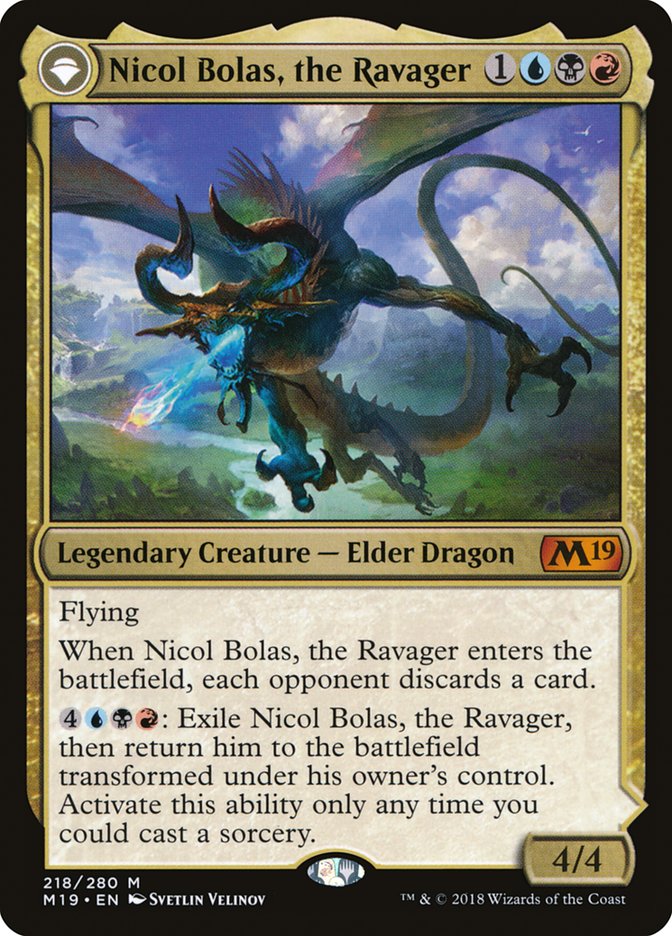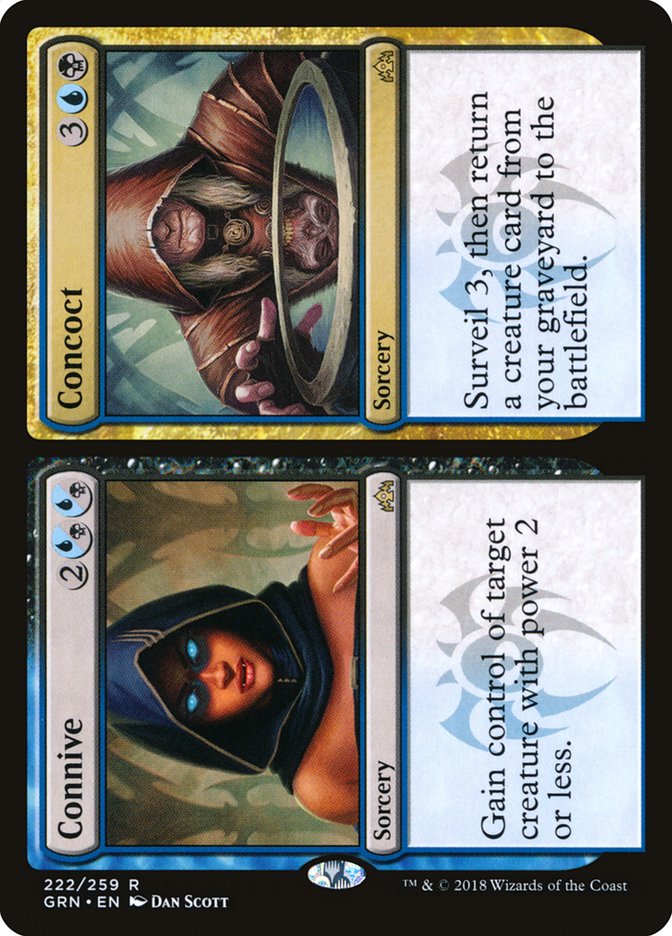Last weekend during the finals of the SCG Columbus Team Constructed Open,
there was a Selesnya Tokens mirror in the Standard seat between Eric
Shoopman and our very own Todd Stevens. I wasn’t surprised seeing Selesnya
Tokens crush the week one Guilds of Ravnica Standard metagame
because the deck was clearly advantaged against the most popular deck
coming into the tournament in Mono-Red Aggro.
Creatures (14)
- 2 Shalai, Voice of Plenty
- 4 Emmara, Soul of the Accord
- 2 District Guide
- 4 Venerated Loxodon
- 2 Trostani Discordant
Lands (22)
Spells (24)

Creatures (16)
- 1 Lyra Dawnbringer
- 2 Shalai, Voice of Plenty
- 4 Thorn Lieutenant
- 3 Emmara, Soul of the Accord
- 4 Venerated Loxodon
- 2 Trostani Discordant
Lands (22)
Spells (22)

I wanted to start with Selesnya Tokens since it not only won the entire
Team Constructed Open, but alongside two copies in the finals of the Open,
it also had another copy in the Top 16 of the Standard Columbus Classic.
Anytime I see the same decklist or archetype show up multiple times during
a weekend, it catches my attention because repeat winners give cards
legitimacy. If only one person had a strong finish with Selesnya Tokens, I
could easily dismiss it as a flash in the pan, but we had multiple
successes with the deck and in the hands of some of the stronger players in
the room last weekend. As a repeat winner, this also teaches us that the
mirror match is not only real but that it’s almost a certainty that if you
do well in a Standard tournament right now, that you’ll face the mirror
eventually.
After examining both decklists, I believe that there are some measures to
be taken to improve the mirror match. While both Eric and Todd have Settle
the Wreckage in their sideboard. there were still some other interesting
and powerful options on display in Tendershoot Dryad and The Immortal Sun
for Shoopman, and Cleansing Nova and Dawn of Hope for Stevens. These all
make sense to me as powerful options to break parity that may be applicable
in other matchups, but for a mirror match like this, I expect games to go
long and simply trading one for one with a Conclave Tribunal isn’t going to
cut it.
If I was going to spend six mana on a gamebreaker, I would much rather have
Camaraderie as opposed to The Immortal Sun. Combining Camaraderie with
March of the Multitudes is a build your own Sphinx’s Revelation, and I
prefer this type of high power spell that my opponent can’t interact with
and can give me the chance to draw more copies of Conclave Tribunal (which
I can then cast for no mana on the same turn I cast Camaraderie).
Both players played four copies of Flower//Flourish since it’s the best
mana-fixing available and a bit reminiscent of Attune with Aether. It’s
also a solid win condition and undoubtedly a major player in the mirror.
Settle the Wreckage is here in up in an effort to blowout a big Flourish
turn in the mirror, and the inclusion of Shalai, Voice of Plenty means that
the opponent has at least one potential out to the powerful instant from Ixalan. Given that information, I want to stay one step ahead and
give my opponent zero outs to my big blowout turn. As such, I recommend the
following overlooked convoke spell:
I like Pause for Reflection because, much like Conclave Tribunal, it can be
played for free, and it’s a unique and innovative card choice that players
won’t expect. Bant Nexus already taught us that fogs are Constructed
playable, and I feel a play pattern may emerge where the first person to
fire off March of the Multitudes into Flourish will get in a big hit and,
thanks to lifelink, survive any crackback. My goal is to lure them into a
false sense of security and a well-timed Pause for Reflection could create
card advantage, tempo, or simply cause the opponent to tap all their
blockers for no gain and lose to whatever you’ve got on the battlefield.
Additionally, I think it would also pair well with Camaraderie because no
matter how much mana you spend, you only need three untapped creatures to
buy an additional turn.
Creatures (22)
- 2 Rekindling Phoenix
- 4 Fanatical Firebrand
- 4 Ghitu Lavarunner
- 4 Goblin Chainwhirler
- 4 Viashino Pyromancer
- 4 Runaway Steam-Kin
Lands (22)
- 22 Mountain
Spells (16)

Max McVety finished third in the Team Constructed Open with Mono-Red Aggro,
and the list looks fairly cookie cutter. The thing that’s most exciting
here is two maindeck copies of Experimental Frenzy which we can see from
the rest of the list is given equal value to Rekindling Phoenix, a
surprising yet high honor. Rekindling Phoenix has been fairly absurd for
all of its time in Standard and particularly dominant in Mono-Red Aggro
mirror matches but based on the results of the Open and Classic, I would
prefer Experimental Frenzy in most of the matchups. I believe moving
forward, people will view this more and more as an Experimental Frenzy deck
and that it’s simply one of the best cards in Guilds of Ravnica.
It reminds me of Future Sight, and I even got a laugh just now when I
realized Mono-Red Aggro has access to Future Sight in Experimental Frenzy
and Selesnya Tokens has access to Sphinx’s Revelation in Camaraderie.
That’s some insanely potent card advantage for the Naya colors.
The only subtle tricks that I know with Experimental Frenzy are to always
be careful when your top card is an instant. For example, if I cast Risk
Factor from the top of my library and see Shock, I can retain priority and
respond to my own spell and cast Shock rather than letting Risk Factor
potentially resolve and give my opponent the option as to if Shock will be
placed into my hand or on the stack. It can also come up that you tap out
to play your final spell of the turn, but you know your top card is a
Lightning Strike, a card you can still very much cast if you decided you
want to by casting it in your following turn’s upkeep.
I love Experimental Frenzy, and I believe it’s one of the most powerful
cards in the set, but I also feel strongly that there’s a serious cost to
playing this card, and deckbuilding considerations matter more than normal.
I would try to stick with a low mana curve, a low land count, and
prioritize instants as much as possible. For this reason, many decks can’t
use Experimental Frenzy, but the ones that do will want to treat it the
same way we’ve viewed Hazoret the Fervent. A Mono-Red Aggro deck already
wants a hyper aggressive beatdown strategy as its plan A, so it will
already be predisposed to want one-drops and cheap burn to facilitate that
plan. As the season progresses, I would keep an eye out on cards that are
subtly very powerful with Experimental Frenzy, like Captain Lannery Storm
and Treasure Map–two spells that provide fast mana to cast more spells or
scry to change the top of your library to continue going off.
Creatures (22)
- 4 Adanto Vanguard
- 4 Knight of Grace
- 4 Lyra Dawnbringer
- 3 Shalai, Voice of Plenty
- 4 Resplendent Angel
- 3 Aurelia, Exemplar of Justice
Planeswalkers (1)
Lands (25)
Spells (13)

Brian Cooper won the SCG Classic in Columbus with Boros Angels, and one
thing is becoming abundantly clear: History of Benalia is incredible. We
saw four copies in both Selesnya Tokens decks, it’s quickly becoming one of
my favorite cards to play with, and I’m not surprised to see Boros Angels
play four of their own. I’ve got a little bit of history with History of
Benalia, as I played with it at the World Championship this year to fight
against both control and Mono-Red Aggro. Now, it might sound odd to have a
card in my sideboard against only pure control or pure beatdown and have
the same card to the job well in both polarized matchups, but I’m certain
it was optimal.
I like History of Benalia against any matchup where my opponent has Teferi,
Hero of Dominaria since it provides enough power to attack Teferi to death
and it’s cheap enough that when they counter it, you’re never caught with
your pants down facing Teferi on turn 5 on an empty battlefield (which is
the most likely way Teferi decks can snowball their advantage). I also
loved how History of Benalia interacted against opponents who had weak
creatures that were easily blanked by 2/2 Knight tokens like Ghitu
Lavarunner and Viashino Pyromancer. At Worlds, I was viewing History of
Benalia as a Bitterblossom against control decks and a weird version of
Kitchen Finks against Mono-Red Aggro, but now it’s just an elite maindeck
card.
Last week
, I tried to hammer home my Week 1 Guilds of Ravnica Standard
strategy:
For SCG Columbus, I would do one of the following:
- Play Mono-Red Aggro.
-
Put
Lyra Dawnbringer
in my maindeck.
Neither is overly clever, but sometimes you don’t need to be.
Unsurprisingly, the winner of the Standard Classic showed up with four
copies of Lyra Dawnbringer maindeck. Right now, Lyra is insane because I
like playing with the best cards and I also prioritize having a good
matchup against those who think on level one. It’s clear that Goblin
Chainwhirler and Runaway Steam-Kin are two amazing cards that play well
together, but with History of Benalia to protect you early in the game and
Lyra to top the curve, it’s trivial to close out the game from there. I
would also like to point out that both winning decklists from the Open and
the Classic contained the combo of Shalai, Voice of Plenty and Lyra
Dawnbringer.
two huge lifelink flying creatures and you can make good use of the
“secret” ability on Lyra, which benefits you for playing an Angel tribal
deck or, in this instance, just some sweet value for playing two awesome
cards together.- Me, last week
To complete the Angel subtheme, there are four copies of Resplendent Angel
maindeck, a card I’ve never seen in a winning list before. I’m not shocked
that Resplendent Angel got the job done, as it’s extremely powerful, but
the metagame was a bit less diverse when Kaladesh was legal, and
the printing of Resplendent Angel seemed to go unnoticed by competitive
players. It has cute synergy with Lyra where it picks up +1/+1 and lifelink
the turn the legendary Angel enters the battlefield and in future turns, it
has the ability to grant 4/4 flying Angel tokens without any further
investment of mana.
I’m very optimistic about Resplendent Angel, and it doesn’t have to be the
best card in any specific matchup or draw to be worth its casting cost. I
view it as a much better version of a white Thorn Lieutenant. They’re both
cheap, on curve, provide synergy, provide value, and have the possibility
to be a lategame mana sink. The results of this past weekend seem to
indicate a creature-dense metagame, and flying is the easy trump to both
Mono-Red Aggro or Selesnya Tokens.
Creatures (7)
Lands (26)
Spells (27)

Andrew Jessup is a strong player who I often keep an eye on when it comes
to Standard technology, and this time was no different. His take on Grixis
Control was an excellent choice given how the metagame shook out, and my
only concern would be Mono-Red Aggro, which he’s recognized with four
copies of Moment of Craving maindeck. Moving forward, I would consider a
mix of Moment of Craving and Dead Weight to take some of the stress off my
lands needing to enter the battlefield untapped.
Notion Rain is one of my favorite cards and for as long as Read the Bones
was legal, I was playing with it. I can see the appeal of curving Moment of
Craving into Notion Rain to mitigate the life loss, to spend a card early
so if you’re on the draw, card advantage doesn’t cause you to discard to
hand size and to play removal that can kill Emarra, Soul of the Accord if
you suspect all the sharks to be playing Selesnya Tokens.
Nicol Bolas, the Ravager saw some play but was largely a victim of its
environment, as it’s very hard to succeed as a 4/4 in a world with Chandra,
Torch of Defiance. That said, it was still popular and successful despite
the clear obstacles it had to overcome. Now its natural predator is gone,
and it’s the beneficiary of a new golden age of good manabases in Standard.
If you wanted to cast Nicol Bolas consistently, you can play as many copies
of Steam Vents, Watery Grave, Sulfur Falls, Drowned Catacomb, and
Dragonskull Summit as you want. I see a skilled player like Andrew Jessup
show up with a magnificently constructed Grixis Control deck on week one of
a new Standard format complete with card draw, removal, mythic rares, and
even sweepers that I like in Ritual of Soot and Golden Demise.
Moving forward with this Grixis Control list, I recommend adding two copies
of Connive to the sideboard. I probably wouldn’t bring it in against
Selesnya Tokens because Trostani Discordant has the odd ability of “At the
beginning of your end step, each player gains control of all creatures they
own,” but imagine casting it on Aurelia, Exemplar of Justice or Legion
Warboss. It’s high variance and you won’t always get the right matchup for
it, but you do have the option of only adding it when you’re sure the value
is there and once you’ve made that choice, I’m confident Connive//Concoct
is one of the most busted uses of four mana in current Standard.
Speaking of Connive, I’d like to close on a gripe I have with the recent
lot of split cards. I feel like Fire and Turn tell you what the card does,
sound fun to say, look good to play with, and sometimes teach you a clever
turn of phrase. The only similarities I can find between “Connive” and
“Concoct” is that they’re spelled with the same first three letters in the
English language. I know Invent//Invert is confusing to parse given the
lack of clarity on “switch” and “exchange” and it was accidental to leave
off “until end of turn,” but the cards’ printing is so egregious it makes
me wonder who thought this was worth it.



